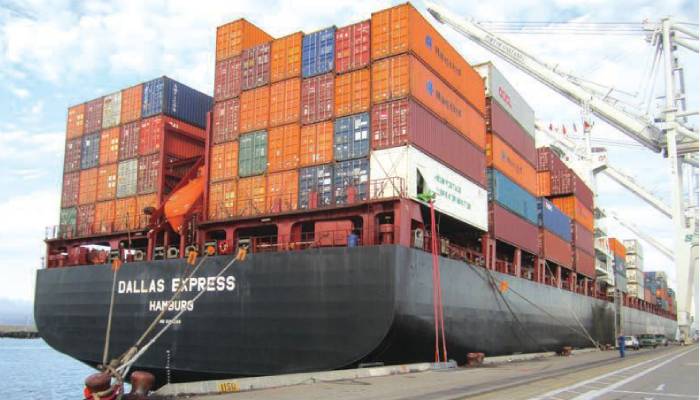
or

Laytime is a crucial term in Maritime trade. It a base of contention of the disputes related to demurrage.
Defined under Voylarules 1993, “Laytime is the period of time agreed between the parties during which the owner will make and keep the vessel available for loading or discharging without payment additional to the freight.”
It is of period where parties agreed for expected delay and it is done by incorporating the laytime clause in the charterparty or Sale contract. The advantage which is enjoyed by ship owner is that pre-determination of the length of the time of loading and unloading or discharging of vessel and idea on its delay can be ascertained and he can held Charterparty accountable for the extra time caused beyond this time.
As its name applies, it is of fixed duration. It may be described wither in terms of days or hours , particular type thereof or as a rate of working cargo. It is Decided and agreed mutually by the parties under the Charterparty wherein the calendar days, working days etc are considered.
Under this type of laytime charter, the laytime allowed is that length of time which is reasonable in the circumstances appertaining in the particular port with the particular ship at the time of loading or discharging, as the case may be. This type of the laytime was an important document but now it is now seen less in the maritime practice.
In case if the Contract or the Charterparty is silent about the type of laytime or on providing the period during which the vessel is to be loaded or discharge her cargo then often the customary laytime prevails. Nielsen v Wait (1885) 16 QBD 67 CA per Lord Esher MR at p.70
There are number of general principles that apply to the construction of the laytime clauses these includes that:
Laytime is to be calculated in the charter by multiplying the agreed daily rate as per hatch of loading/ discharging the cargo by the number of the ship’s hatches and dividing the quantity of the cargo by the resulting sum. Laytime may be expressed in one or other units of time or as a rate of working cargo.
In general, laytime commences upon the vessel’s arrival at the specified destination, notice of readiness having been given (if required) and after any time provided for in the charter has elapsed.
Normally three conditions must be satisfied before the charterer can be required to start loading or discharging, as the case may be, and therefore the laytime allowed starts to run. These are that:
When these conditions have been met, the vessel is an Arrived Ship and, subject to the expiry of any period prescribed in the charter, laytime begins to run
Upon the laytime commencing, liability for delay may change from the ship-owner to the charterer, depending on the terms of the charter.
Important battle: how to prove the commencement of laytime in order to decide the liability between the Charterer and Ship-owner
Earlier the law related to the commencement of laytime was confusing and hence difficulty was faced by the parties and the Court to decide the matter until the House of the lords resolved the case of JohannnaOldendorff wherein the Lord Reid laid down what has subsequently become and know as “the Reid test”. It was the landmark judgment in the Maritime history and helpful for concluding the actual period of commencement of laytime [AldebaranCompaniaMaritima SA Panama v Aussenhandel AG Zurich (The Darrah)]
In The Johanna Oldendroff, the adventure under a voyage charter was divided in to four successive stages:
Since commencement of laytime is very important, it is advisable to include all possible events which can affect laytime and in no uncertain words it will also helps parties to avoid unnecessary disputes.
Pradeep K Jain is the Managing Partner at Singhania & Co., Mumbai Office, and an expert in Maritime and Corporate Law.
Nalini Mishra - Senior Associate

Lex Witness Bureau

Lex Witness Bureau

Lex Witness Bureau

For over 10 years, since its inception in 2009 as a monthly, Lex Witness has become India’s most credible platform for the legal luminaries to opine, comment and share their views. more...
Connect Us:


The Grand Masters - A Corporate Counsel Legal Best Practices Summit Series
www.grandmasters.in | 8 Years & Counting
The Real Estate & Construction Legal Summit
www.rcls.in | 8 Years & Counting
The Information Technology Legal Summit
www.itlegalsummit.com | 8 Years & Counting
The Banking & Finance Legal Summit
www.bfls.in | 8 Years & Counting
The Media, Advertising and Entertainment Legal Summit
www.maels.in | 8 Years & Counting
The Pharma Legal & Compliance Summit
www.plcs.co.in | 8 Years & Counting
We at Lex Witness strategically assist firms in reaching out to the relevant audience sets through various knowledge sharing initiatives. Here are some more info decks for you to know us better.
Copyright © 2020 Lex Witness - India's 1st Magazine on Legal & Corporate Affairs Rights of Admission Reserved